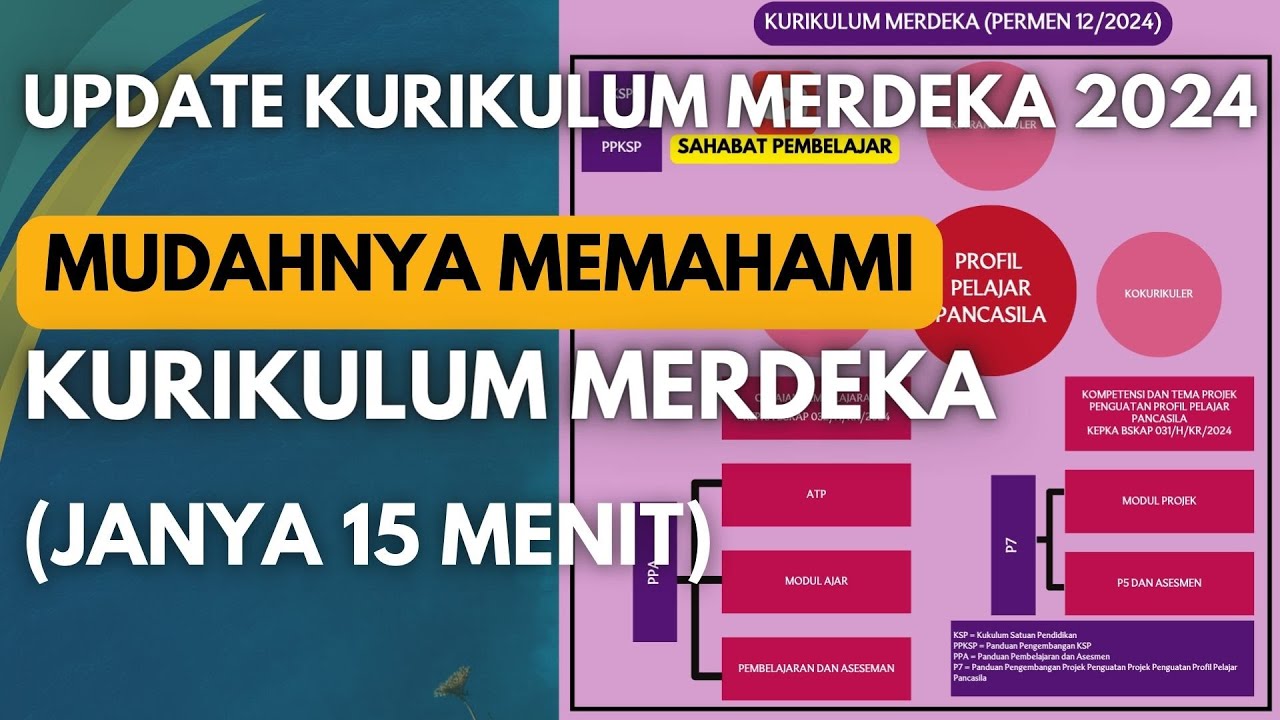Video 4 : Petunjuk Teknis Menguraikan CP dengan Metode 2
Summary
TLDRIn this instructional video, Deamanda explains how to break down CP (Competency Profile) into TP (Teaching Plan) and ATP (Assessment Teaching Plan) using an alternative method. She emphasizes analyzing competencies, including implicit ones, and narrowing down subject matter for teaching. The video covers how to create a detailed analysis table, select essential material, and break it into specific competencies. Deamanda demonstrates how to apply these steps to physics lessons, specifically focusing on the dynamics of motion, force types, and friction, while also providing tips for differentiated instruction based on student levels.
Takeaways
- 📊 The video discusses how to break down CP (Capaian Pembelajaran) into TP (Tujuan Pembelajaran) and ATP (Alur Tujuan Pembelajaran).
- 📚 In method 2, the CP is analyzed to identify implied competencies and material scope.
- 🔍 A table is used to analyze competencies and material scope, breaking them down into specific components.
- 🧲 An example using physics material on dynamics explains how to break down the broad topic into essential components like forces (gravity, normal force, etc.).
- 🔧 The key is to select essential materials that students must master, focusing on those with connections to other topics.
- 💡 When analyzing competencies, implied actions like 'applying' or 'using' are identified to refine TP.
- 🎯 Method 2 creates more specific and operational TP compared to method 1, leading to clearer learning goals.
- 📝 Example TP: Students categorize forces, calculate normal and friction forces, and apply Newton’s laws to solve problems.
- 🔗 ATP (Alur Tujuan Pembelajaran) integrates cognitive competencies with more specific material.
- 🚀 Teaching steps are structured to guide students from understanding friction to calculating it in various scenarios, ensuring they achieve TP.
Q & A
What is the main topic of the video?
-The video discusses how to break down CP (Curriculum Points) into TP (Target Points) and ATP (Advanced Target Points) using an alternative method.
What is the first step in the alternative method for breaking down CP into TP and ATP?
-The first step is creating an analysis table that breaks down the competencies and material scope from the CP, allowing for detailed analysis of what needs to be taught.
How does the alternative method differ from the first method in defining TP?
-In the alternative method, the TPs are more specific and operational. Instead of just stating that students will be able to apply a concept, the TPs focus on categorizing, calculating, and applying concepts in various scenarios.
What example is used to illustrate the breakdown of material in the video?
-The example of 'dynamics of motion' is used, where the material is further broken down into key concepts such as forces (weight, normal, contact, and frictional forces) and Newton’s laws.
What are some key competencies students should master under the topic of dynamics of motion?
-Students should master categorizing forces based on characteristics, calculating forces like weight and normal force in various cases, and applying Newton's laws to solve problems.
What is the purpose of analyzing the implicit competencies in CP?
-The purpose is to reveal additional competencies not explicitly stated, such as 'applying' or 'implementing' a concept, so that the TP becomes more comprehensive.
How are high-achieving students accommodated in the learning process described in the video?
-High-achieving students are given additional enrichment objectives (TPU) that allow them to explore material at a higher level, helping them reach their full potential without waiting for their peers.
What is the function of using the Anderson Taxonomy in this teaching method?
-Anderson Taxonomy is used to create a learning pathway by breaking down the learning process into stages, helping students gradually build towards achieving the specific TP.
How are lessons structured in relation to friction in the example provided?
-Lessons on friction are structured in stages: first, students observe friction-related phenomena, then define and understand friction, followed by explaining the relationship between friction, normal force, and friction coefficient, and finally calculating friction in different scenarios.
What does the video emphasize about selecting essential material for teaching?
-The video emphasizes selecting material that is essential for students to understand and that ties into other topics, ensuring a focused and relevant learning experience.
Outlines

This section is available to paid users only. Please upgrade to access this part.
Upgrade NowMindmap

This section is available to paid users only. Please upgrade to access this part.
Upgrade NowKeywords

This section is available to paid users only. Please upgrade to access this part.
Upgrade NowHighlights

This section is available to paid users only. Please upgrade to access this part.
Upgrade NowTranscripts

This section is available to paid users only. Please upgrade to access this part.
Upgrade NowBrowse More Related Video

Video 5 : Petunjuk teknis menguraikan CP dengan metode 3

Cara Cepat Membuat TP & ATP Informatika Fase D Berdasarkan Perubahan CP Terbaru 2024 yang Tepat !!!

Video 3 : Petunjuk Teknis Menguraikan CP dengan Metode 1

Analisis CP TP ATP dan KKTP Kurikulum Merdeka

MUDAHNYA MEMAHAMI KURIKULUM MERDEKA. CUKUP 15 MENIT. UPDATE KURIKULUM MERDEKA 2024

How to Write a Lesson Plan — The 5Es Format
5.0 / 5 (0 votes)